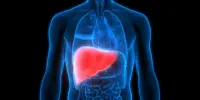Alagille syndrome is a hereditary condition that primarily affects the liver but can have deadly consequences in other organs and systems as well. There is currently no recognized treatment for it, but researchers have finally discovered one that may be helpful.
The Notch pathway, a cell-level signaling mechanism in the body critical for many vital biological functions, including correct functioning of the liver, is the target of a recently created medication known as NoRA1.
The genetic defect that underlies Alagille syndrome reduces Notch signaling, which in turn results in inadequate bile duct growth and regeneration, allowing bile to accumulate and harm the liver.
Thanks to our thorough understanding of the zebrafish genome, gene similarities, and the ease with which their growth can be studied, zebrafish are frequently employed in scientific study into human disease. In the most recent study, it was discovered that NoRA1 increased Notch signaling in zebrafish with genetic abnormalities that were comparable to those discovered in children with the condition.
The liver injury in the zebrafish was reversed by causing duct cells to grow and rebuild like healthy liver tissue would. The use of the medication improved the chances of survival for the study’s zebrafish participants. In fact, a single dose of NoRA1 given four days after fertilization was sufficient to increase survival rates by three times.
Because of impaired Notch signaling, most children with Alagille syndrome do not experience the liver’s exceptional capacity for regeneration, according to molecular biologist Chengjian Zhao of the Sanford Burnham Prebys Medical Discovery Institute in California.
According to our findings, activating the Notch pathway with a medication may be sufficient to restore the liver’s natural capacity for regeneration.
The medicine targets bodily processes that ought to occur naturally, which is one of its advantages. That is encouraging if the therapy moves forward to clinical trials in the future and can be tested on real individuals.
According to molecular biologist Duc Dong, also from the Sanford Burnham Prebys Medical Discovery Institute, “we are just supporting a natural regenerative process to occur, so I’m optimistic that this will be a successful therapy for Alagille syndrome.”
Given how crucial the Notch pathway is to the smooth operation of routine biological processes, NoRA1 may be able to aid in the treatment of other common disorders as well. The current emphasis is on how it can aid in the treatment of this uncommon liver ailment.
Alagille syndrome affects more than 4,000 newborns each year, and liver transplants are frequently required. There is a 75% mortality rate by late adolescence without a transplant, and donors are scarce.
In order to test the NoRA1 medication further, the researchers are currently working on miniature livers created in the lab using stem cells taken from individuals with Alagille syndrome. Even while there is still a long way to go, the indicators are encouraging.
“Alagille syndrome is widely considered an incurable disease, but we believe we’re on the way to changing that,” says Dong.
Our findings show this drug’s efficacy for the first time, and we intend to advance it into clinical trials.















